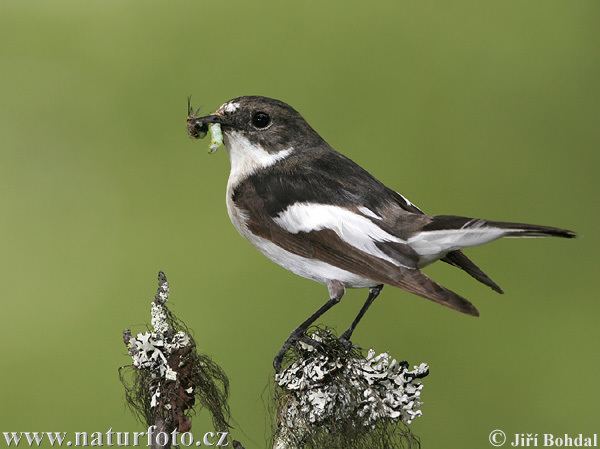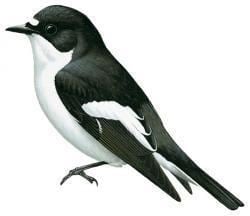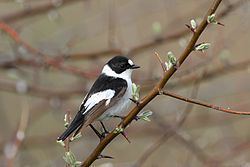Scientific name Ficedula Higher classification Old World flycatcher Order Passerine | Family Muscicapidae Phylum Chordata Rank Genus | |
 | ||
Lower classifications European pied flycatcher, Collared flycatcher, Red‑breasted flycatcher, Narcissus flycatcher, Mugimaki flycatcher | ||
The Ficedula flycatchers are a genus of Old World flycatchers. The genus is the largest in the family, containing around thirty species. They have sometimes been included in the genus Muscicapa. The genus is found in Europe, Asia and Africa. Several species are highly migratory, whereas other species are sedentary.
Contents
- European pied flycatcher ficedula hypoleuca
- Taxonomy and systematics
- Extant species
- Former species
- Speciation
- Description
- References

European pied flycatcher ficedula hypoleuca
Taxonomy and systematics

The genus was introduced by the French naturalist Mathurin Jacques Brisson in 1760. The genus name is from Latin and refers to a small fig-eating bird (ficus, "fig") supposed to change into the blackcap in winter.
Extant species
The genus contains the following species:

Former species
Formerly, some authorities also considered the following species (or subspecies) as species within the genus Ficedula:
Speciation

A 2015 study on genomic pattern of differentiation, also known as islands of speciation by Burri et al., in the Ficedula flycatchers. Islands of differentiation are genomic regions with elevated measures of genetic differentiation. The authors examined island of differentiation within genomes and sought to answer (1) how they are formed and (2) what role they have in speciation. The flycatcher species complex is made up of four sister species and has a broad species range over all of Europe and parts of North Africa. The authors sequenced 200 genomes from 10 populations to an average of 14x coverage.
The authors tested two prominent models for the accumulation of islands of speciation, speciation with gene flow and linkage selection. Some of the expected patterns for islands of differentiation forming accumulating under a gene flow model and reduced sequence divergence outside the islands of differentiation compared to the rest of the genome and expansion of the islands of differentiation as reproductive isolation is reinforced during the speciation process. Based on the genomic data, expectations from the speciation with gene flow model were not well supported. Instead there was more support for the linkage selection model for islands of variation model. Such as an inverse correlation between recombination rate and differentiation, low amounts of ancestral variation in low recombining regions, and a positive relationship with nucleotide diversity and recombination rate. Some of the main findings from the study were:
Description
The flycatchers in the genus Ficedula are typically small with slender bodies and rounded heads. In many cases they are sexually dimorphic in their plumage, with the males being brightly or strikingly coloured and the females being duller or drabber.
